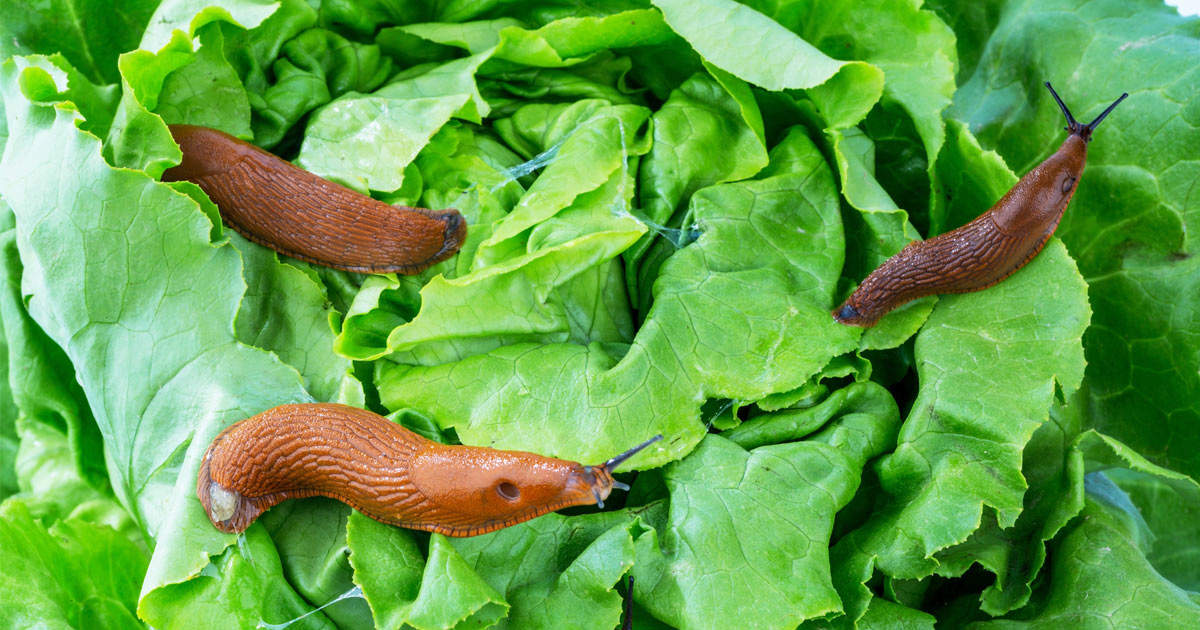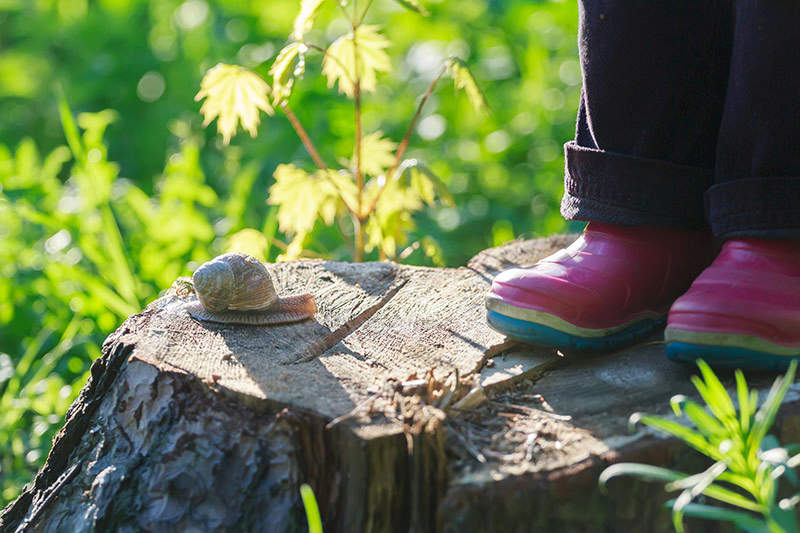Rat Lungworm Disease and How to Prevent It

On April 17, 2017, the Hawaii State Department of Health announced that the state has confirmed 11 cases of rat lungworm disease since the year began. Four related cases of this slug- and snail-transmitted disease are expected to be added to that total.1
While news coverage of these cases has shed light on this disease, rat lungworm isn't new — and the disease isn't limited to Hawaii. Knowing the answers to the following common questions about slugs, snails and rat lungworm can help protect you and your family against this disease:
- What is rat lungworm disease?
- How are slugs and snails involved?
- How do humans get rat lungworm?
- Where is rat lungworm found?
- What are the symptoms of rat lungworm disease?
- How can you protect against rat lungworm?
What is rat lungworm disease?
Rat lungworm is a parasitic roundworm known by the scientific name Angiostrongylus cantonensis. Rats are the primary hosts for this parasite and the only animal in which the worm can complete its full life cycle.
When humans are infected with rat lungworm, the parasite can't fully mature or reproduce. However, before eventually dying, rat lungworm larvae travel through the human body and settle near the brain, causing a potentially lethal inflammation of the brain and spinal cord known as eosinophilic meningitis.
A very closely related parasite, Angiostrongylus costaricensis, is transmitted in the same ways as rat lungworm disease and is often found in geographical settings where slugs and snails are prevalent. This parasite can reach adulthood in humans, and concentrates in the gastrointestinal tract.2
How are slugs and snails involved?
Slugs and snails serve as intermediate hosts of the rat lungworm parasite during the larval stage of its normal life cycle. Common garden slugs and snails are integral to the parasites' continued spread among rats — and humans.
Infected rats pass the parasite's larvae in their feces, which are eaten by slugs and snails. The rat lungworm larvae continue to mature in their slug and snail hosts, which are commonly eaten by rats. Rats that feed on infected slugs and snails become infected or re-infected. The parasites then mature in the rats' lungs and start the cycle over again.2
Infected slugs and snails also transmit rat lungworms to humans. All known cases of rat lungworm disease are linked to slug and snail contact.2

Slugs and snails can contaminate garden produce with rat lungworm parasites.
How do humans get rat lungworm?
The April 17, 2017 Hawaii cases of rat lungworm disease were due to people consuming a slug-infected homemade drink at a get-together.1 Most cases of the disease involve similar, unintentional consumption of infected slugs or snails. Rat lungworm is not transmitted by human-to-human contact.
Undercooked culinary dishes that include snail meat are often to blame. Hands contaminated during food preparation of infected slugs and snails lead to infections as well. Transmission also occurs from eating raw produce or raw fruit and vegetable juices that accidentally contain a snail or slug part.2 It's also believed that eating unwashed produce that contains the mucus residue left behind by infected slugs or snails can lead to infection.3
Rat lungworm can infect other commonly eaten creatures, such as freshwater shrimp, land crabs and frogs. If eaten raw or undercooked, these foods may transmit the parasite to humans, too.1
Where is rat lungworm found?
The greatest percentage of rat lungworm disease cases have occurred in tropical and subtropical areas, such as the Pacific Islands, Southeast Asia and the Caribbean. However, thousands of cases have been diagnosed in more than 30 countries worldwide, including the U.S. mainland's Gulf Coast, Southeast, West and Midwest.2,3
The parasite continues to spread as infected rats stowaway on ships setting sail. Infected slugs and snails, transported intentionally or unintentionally, also add to the spread.
Unwelcome slugs, snails and related mollusks are regularly intercepted in U.S. customs and border patrol inspections of imports. With the transportation of plants and other products — and hitchhiking slugs and snails — across state lines, the U.S. spread of rat lungworm is expected to continue.2

Children are often drawn to slugs and snails.
What are the symptoms of rat lungworm disease?
Some rat lungworm infections produce very mild, short-lasting symptoms that pass on their own. However, others produce severe, life-threatening complications. Health officials believe many infections go undiagnosed, mistaken for common flu or other minor illnesses.
Symptoms may appear anywhere from one day to six weeks after infection and last two to eight weeks or longer in severe cases. Common symptoms include headache, low-grade fever, nausea, vomiting, stiff neck and a painful tingling of the skin.
Because the parasites cannot fully mature in humans, they eventually die. However, the human body's immune response to the dying intruders, such as the swelling with severe meningitis cases, can be life-threatening.2
The related Angiostrongylus costaricensis can incubate in humans for several weeks, months or even a year. Symptoms concentrate in the abdominal area and often are mistaken for appendicitis attacks. These parasites are capable of maturing in human hosts, causing severe, recurrent abdominal problems.
How can you protect against rat lungworm?
If you believe you have contracted rat lungworm disease, seek out a qualified medical professional immediately. The following protective steps can also help you fight the spread of rat lungworm disease:
1. Educate yourself, your family and friends. Invest time to learn all you need to know about slugs and snails, and share the information with others. Teach all family members, especially children, to avoid handling slugs and snails. The Centers for Disease Control and Prevention (CDC) reports that some cases have occurred when children eat a garden slug or snail after being dared to do so.2
If you handle slugs and snails in your garden, always wear protective gloves and wash your hands thoroughly when done. When traveling, investigate risks before you travel, and prepare your family for chance slug or snail encounters.

Keeping gardens free of slugs, snails and rodents helps reduce the risk of rat lungworm.
2. Set high standards for garden and kitchen cleanliness. Good garden sanitation keeps your home free of leaves, weeds and other debris that provide shelter and hiding places for slugs, snails and rodents. Watch garden areas closely for telltale signs of slug or snail mucus trails as these pests travel between shelter and gardens.
When eating any type of fresh produce, from citrus fruits to root vegetables, wash it thoroughly to be sure it's clear of any possible contamination. Use running water, not a quick soak. Wash leaf lettuces, a favorite of slugs and snails, one leaf at a time. Avoid eating uncooked produce and raw juices outside your control, especially when traveling to areas known to harbor infected slugs and snails.
3. Treat garden areas to control slug and snail pests. Ridding your home and garden of slugs and snails is a critical step toward preventing infection of your family with rat lungworm disease. Learn your options in slug and snail control products, so you can decide which one is best for you. Simple-to-use, highly effective slug and snail controls from Corry's can help you control your family's exposure to slugs and snails — and put an end to the damage these destructive pests do to garden plants.
As interest in rat lungworm disease grows, and more cases appear, more information about risks and prevention may become available. For the most recent updates in your area or areas where you plan to travel, check with local public health officials, state health organizations or the CDC.
Corry's is committed to helping you protect your family and your home against emerging pest threats.
Always read product labels thoroughly and follow instructions carefully.
Corry's with design is a registered trademark of Matson, LLC.
Amdro is a registered trademark of Central Garden & Pet Company.
Sources:
1. Hawaii State Department of Health, “DOH News Release: Hawaii Department of Health Confirms Two Cases of Rat Lungworm on Hawaii Island with Four Probably Cases," State of Hawaii.
2. Centers for Disease Control and Prevention, “Parasites – Angiostrongyliasis (also Known as Angiostrongylus Infection," U.S. Department of Health & Human Services.
3. Capinera, J. and Walden, H.S., “Featured Creatures: Rat Lungworm," University of Florida IFAS, November 2016.


